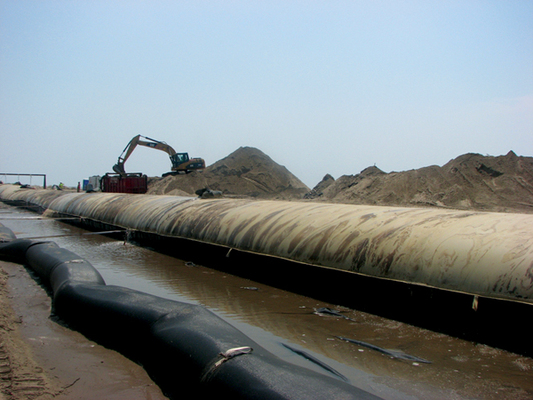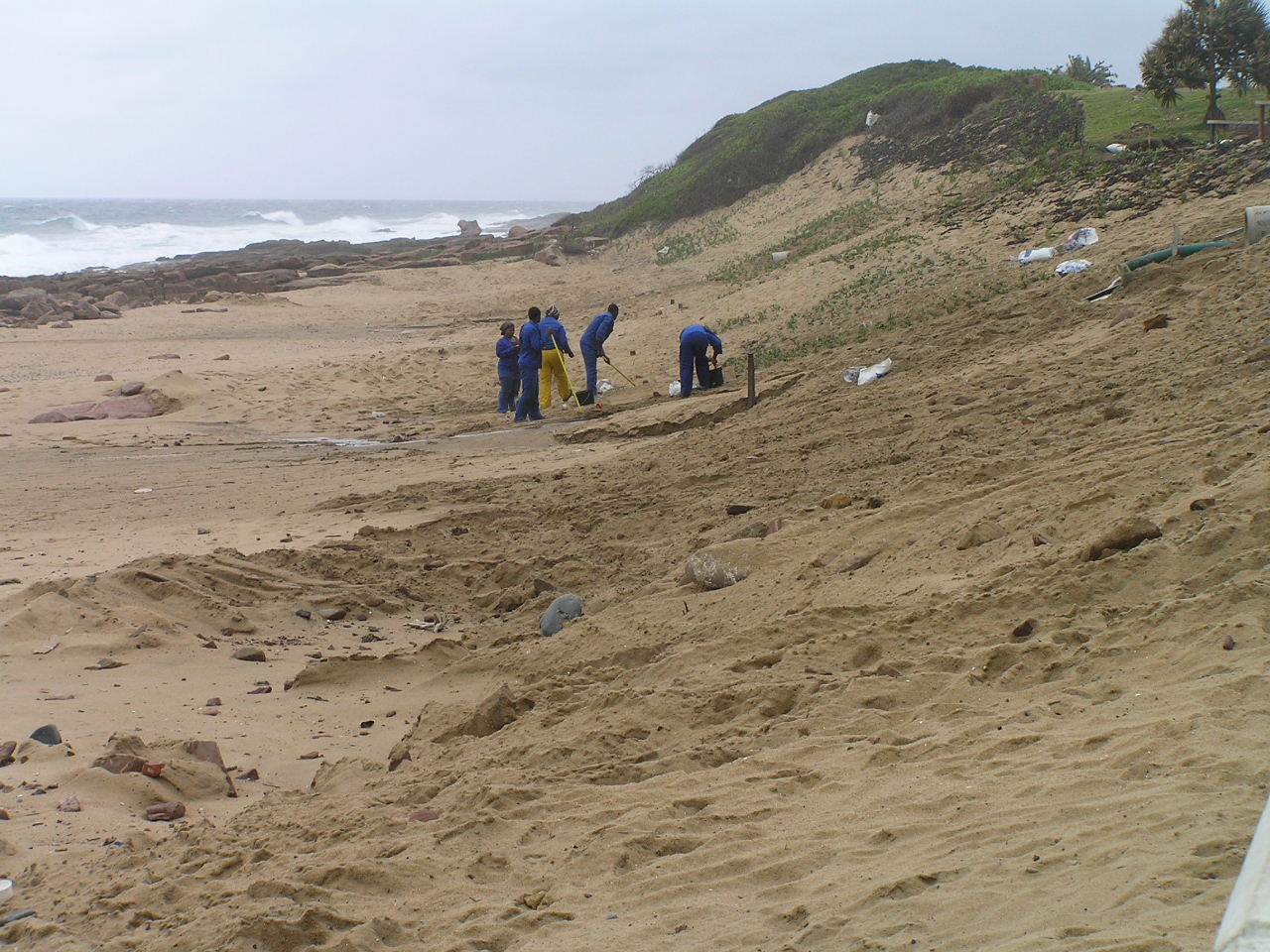Definition
Naturally occurring sand dunes are wind-formed sand deposits representing a store of sediment in the zone just landward of normal high tides. Artificial dunes are engineered structures created to mimic the functioning of natural dunes. Dune rehabilitation refers to the restoration of natural or artificial dunes from a more impaired, to a less impaired or unimpaired state of overall function, in order to gain the greatest coastal protection benefits. (Climate Technology Centre & Network, Information related to Dune construction and stabilisation, accessed on Sept. 2016)Co-benefits and impacts
Artificial dune construction and dune rehabilitation are technologies aimed at reducing both coastal erosion and flooding in adjacent coastal lowlands. As dunes provide both physical and tangible defence, they may even serve to encourage sustainable development within the coastal zone. Dunes are naturally occurring features, and provided the construction/initiation of artificial dunes is completed in a sympathetic manner, they do not necessarily spoil the local landscape. Many sandy beaches would have had naturally occurring sand dune complexes prior to coastline development; as such, the initiation of artificial dunes may even restore a degree of natural character to the site. Sand dunes also provide a valuable coastal habitat for many highly specialised plants and animals. Therefore, sand dunes may be considered important both ecologically and recreationally. (Climate Technology Centre & Network, Information related to Dune construction and stabilisation, accessed on Sept. 2016)Definition (GR)
Οι αμμόλοφοι που δημιουργούνται με φυσικό τρόπο είναι αποθέματα άμμου που σχηματίζονται από τον άνεμο και αντιπροσωπεύουν το απόθεμα ιζήματος στη ζώνη προς την ξηρά κανονικών υψηλών παλιρροιών. Οι τεχνητοί αμμόλοφοι είναι μηχανικές κατασκευές που δημιουργούνται ως απομίμηση της λειτουργίας των φυσικών αμμόλοφων. Η αποκατάσταση των αμμόλοφων αναφέρεται στην αποκατάσταση φυσικών ή τεχνητών αμμόλοφων από μια πιο εξασθενημένη, σε μια λιγότερο εξασθενημένη ή ανεμπόδιστη κατάσταση της συνολικής λειτουργίας, προκειμένου να προκύψουν τα μέγιστα οφέλη της παράκτιας προστασίας. (Climate Technology Centre & Network, Information related to Dune construction and stabilisation, accessed on Sept. 2016)Co-benefits and impacts (GR)
Η κατασκευή τεχνητών αμμόλοφων και η αποκατάστασή τους είναι τεχνολογίες που αποσκοπούν στη μείωση τόσο της παράκτιας διάβρωσης όσο και των πλημμυρών σε παρακείμενες παράκτιες πεδινές περιοχές. Καθώς οι αμμόλοφοι παρέχουν τόσο φυσική όσο και απτή άμυνα, μπορούν ακόμη και να ενθαρρύνουν την αειφόρο ανάπτυξη εντός της παράκτιας ζώνης. Οι αμμόλοφοι είναι φυσικά χαρακτηριστικά και δεδομένου οτι η κατασκευή/εγκατάστασή των τεχνητών αμμόλοφων ολοκληρώνεται με συμπαθητικό τρόπο, δεν καταστρέφουν απαραίτητα το τοπίο της περιοχής.Πολλές αμμώδεις παραλίες θα είχαν φυσικά συμπλέγματα αμμόλοφων πριν από την ανάπτυξη των ακτών. ως εκ τούτου, η εγκατάσταση τεχνητών αμμόλοφων μπορεί ακόμη και να επαναφέρει έναν βαθμό φυσικού χαρακτήρα στο τοπίο. Οι αμμόλοφοι παρέχουν επίσης έναν πολύτιμο παράκτιο βιότοπο για πολλά εξειδικευμένα φυτά και ζώα. Επομένως, οι αμμόλοφοι μπορεί να θεωρηθούν σημαντικοί οικολογικοί χώροι αλλά και σημαντικοί χώροι αναψυχής.
Flood management measure
Last modified: May 9, 2020, 10:58 a.m.


 Ελληνικά
Ελληνικά

